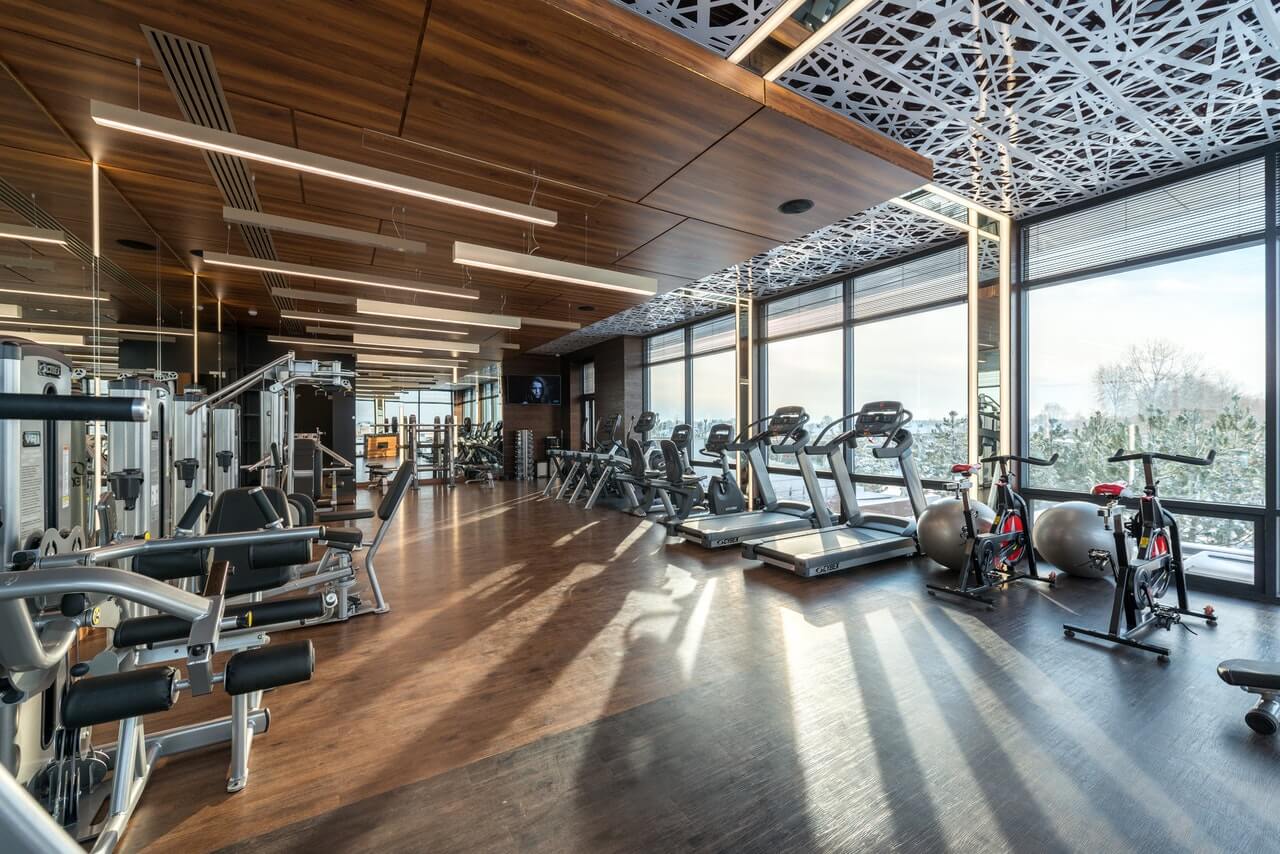As a gym manager, you’re in the problem solving business. People join your gym to get results. For some that will be losing weight, for others adding muscle, and for others still it’ll be improving their self esteem. Whether they ultimately achieve those goals is, to a degree, outside of your control. But, unless they perceive that you are adding real value to them through the program you deliver, they are not likely to hang around. In this article, I’ll reveal the 9 keys to creating and communicating value in your workout programming.
Key Strategy Overview
- Seek to understand the needs of your members before offering solutions.
- Build rapport.
- Explain the why of what you’re giving them in a way that they understand.
- Always display sincerity and integrity.
- Show genuine enthusiasm.
- Find out what injuries and niggles the member has.
- Help members set realistic goals.
- Incorporate the key principles of program design
- Provide positive feedback
Seek First to Understand
Imagine if you were experiencing pain in your feet. You try to ignore it for a couple of weeks but finally decide that you have to visit a podiatrist. When you sit down in his office, he briefly listens to your complaint and then whips off his shoes, pulls out the insoles and hands them to you. You put them on and begin walking around, but, rather than improving the situation, they only make your feet feel worse.
The podiatrist, however, says that they worked for him so you just have to persevere and they will eventually work for you. So, you go away and walk around with the insoles in, but things only get worse. When you return, the podiatrist tells you that the problem is that you don’t have a positive enough attitude. With no further success, you make a third visit to the foot doctor. This time, he becomes upset at your ‘negative’ attitude, telling you that he’s bent over backwards to help you but you simply cannot be helped.
How likely are you to make a fourth visit to this podiatrist?
What was the problem here?
The podiatrist did not properly diagnose before prescribing. The same thing happens in gyms every day. Just like the shoe insoles, new members are barely listened to before they are handed a cookie cutter routine that is not going to meet their needs. And then, when they inevitably fail to get the results they relied on for the gym to help them achieve, they leave.
That is why every gym professional needs to listen first to understand before making any recommendations. One person’s definition of fitness may be very different to someone else’s. If you impose a program on a member that is not a good fit with their personal preferences, goals, physical needs, and current schedule you will be setting them up for failure.
Think back to the example with the podiatrist. Before he can recommend an insole that is truly going to benefit you, he has to learn about your symptoms. Then a mold of your foot can be made so that a customized mold can be created and fitted. At that point, you will be able to test them out to see if they bring relief. A checkup will reveal whether any fine tuning is needed.
It shouldn’t be any different in the gym.
When you or your staff first sit down with a new member, you need to seek to understand that person. Many new members are quite nervous and don’t really know what to say. You can help to make the session seamless by asking detailed questions such as …
- Do they have a partner?
- What are the home obligations?
- What job do they do?
- What are their working hours?
- How physically active is their lifestyle?
The more you can understand about the person, the better you’ll be able to put together a training program that works for them.
Develop a Positive, Productive Relationship
Unless your members feel comfortable and positive about you and the staff members that they interact with, they will struggle to find value in the program. Here are 4 ways to develop positive relationships:
Build Rapport
Rapport with a person is built through common experiences, viewpoints and outlooks. Look for areas of common interest and build upon them.
Know Your Stuff
A good trainer will have the ability to explain the solutions they offer with precision and detail but also in a way that the member can clearly understand. Unless you can clearly explain, from a biomechanical point of view, why they should be doing an exercise, you should not prescribe it for them.
Your staff should be able to explain the advantages and disadvantages of using dumbbells versus barbells and cables and then relate that knowledge to the member’s personal situation. They should also be able to talk about the factors that determine whether an exercise is good or bad. The more the member sees the person in front of them as an expert, the more motivated they will be to follow through on their advice and to perceive value in the programming they provide.
Demonstrate Sincerity & Integrity
If your member perceives that the person they’re dealing with sees them as just another number, they will never buy into the program, no matter how good it is. Sincerity is shown through your tone of voice, your eye contact, your level of distraction and your communication with others when you are on the gym floor with that person. When you are with a client, you need to be fully focused on them.
Integrity is all about portraying professionalism. It involves your actions, speech and behavior as well as your dress and grooming.
Show Enthusiasm
Enthusiasm can be sincere or insincere. Sincere enthusiasm is built upon a foundation of deep knowledge of your craft, understanding of your members’ needs and confidence that you have the solution to her problem. That’s the kind of enthusiasm you want to portray to your members.
One way to build this sort of enthusiasm is to share experiences of others you have worked with and the results they have achieved by following a similar program. Then assure them, “If they can get those results, you can too!”
Use Productive Assessment Tools
A lot of gyms are still doing fitness testing with new members that tests the maximum number of reps they can do on a range of exercises like push ups and sit ups, along with a flexibility reach test. There are, however, a couple of major problems with this. If the new member isn’t used to doing any type of exercise, asking them to suddenly perform a maximum set of anything is inviting an injury.
Getting them to do a max set is also introducing them to exercise with a negative connotation. Exercise should be only slightly more challenging than what a person is used to. Taking them to a point of failure in the first session is not what you want to impart psychologically.
The reality is that it’s not that important to discover what the starting strength level of the member is. What’s more important is to know what their injuries are, what hurts when they move, and how their shoulders, back, neck, knees and hips feel when they are mobile. The answers to those questions will help to determine which exercises might not be comfortable and, therefore, require some sort of modification for them.
As a good trainer, you need to discover what the psychological tolerance of the member is. If you have a member who has a low psychological tolerance, it is a mistake to train them super hard. As well as being physically safe and biomechanically sound, the workout you give needs to also be psychologically comfortable. It should be neither too easy nor too hard.
Help Members Set Realistic Goals
Most people are not very good at setting goals. Those that do are often extremely unrealistic and ambiguous about what they want. You might have a young guy come in who tells you he wants to be a powerlifter so he can bench 300 pounds and be ripped in the process. Those two ambitions, however, require different types of training. They will also most likely take years of hard work and dedication to nutrition to achieve. Unless you help the member to readjust his goals to become more achievable, he’s going to blame you when he doesn’t achieve them.
Your job is to help your members temper and quantify their goals without having them lose enthusiasm. To do that you need to have the ability to impart knowledge in an empathetic way. A common problem with many people trying to build muscle is that they confuse their goal in their mind, so that it becomes to lift as much weight as possible.
If the goal is to lift the maximum amount of weight, then efficiency will be defined as using exercises that minimize the load on each muscle so you can lift more. However, if the goal is to build muscle, you’ll define efficiency as using exercises that allow you to load the muscle the most with the least wasted effort. Those are two goals that are very different. But unless you help your members distinguish between, they’ll end up spinning their wheels on the gym floor.
Here are 6 requirements of a good goal that need to be taken into account when helping your member set realistic goals:
- A goal must be well defined.
- A goal must be stated in writing.
- A goal must be stated in the positive.
- A goal must have a deadline for its completion.
- A goal must have sincere emotional appeal.
- A goal must be challenging, yet realistic.
Incorporate the Key Principles of Program Design
Unless the actual program is designed according to the fundamental principles of program design, it will not meet the needs of your gym member. To be successful a program must follow general scientific principles that prepare the trainer to be a fitter, healthier person.
The following concepts should all be incorporated into program design:
- Flexibility: the range of motion around a joint and the length of the muscles around the joint is essential for effective, safe movement.
- Muscular strength: foundational strength is a base level of physical conditioning that prevents injury and increases physical efficiency.
- Muscular endurance; this relates to the ability of a muscle to continue contracting for an extended period of time.
- Cardiovascular fitness: Cardio fitness relates to the body’s ability to uptake and use oxygen efficiently. The cardiovascular system transports oxygen and nutrients to the body’s cells while also taking away waste products produced through exercise.
- Body composition: this is the ratio of fat free mass to fat mass in the body. Body composition is a good indicator of overall health and fitness and, so, should be factored into all programming.
- Agility: Agility is the ability to change direction in a controlled manner. It helps to prevent injury and is a key component of sports activities.
- Balance: this can be designed as the ability to maintain bodily control when on an unstable surface.
- Coordination: Coordination is the ability to move in a biomechanically efficient way.
Provide Positive Feedback
We all thrive off positive reinforcement. New members need it more than most. They are likely to be unsure about whether they’re doing things the right way and are really on track to their goals. Once you’ve taken the member through their orientation and first training session, it is imperative that you, or the person who took them through the program, stay in touch.
The practicality of a large gym means that the staff member will probably not be able to check in with the member in person every session. But they can and should do so at least once a month. On top of that, each trainer should provide those they work with with access to an email address where they can ask questions any time.
The counter staff should be a part of the positive feedback loop for members. A simple, ‘How’d your workout go, Joe?’ is all it takes.
Key Point Summary
- Seek to understand the needs of your members before offering solutions.
- Build rapport.
- Explain the why of what you’re giving them in a way that they understand.
- Always display sincerity and integrity.
- Show genuine enthusiasm.
- Find out what injuries and niggles the member has.
- Help members set realistic goals.
- Incorporate the Key Principles of Program Design
- Provide positive feedback
 Gym Owner Statistics: The State of Gyms, Member Trends, and Usage Data
Gym Owner Statistics: The State of Gyms, Member Trends, and Usage Data



